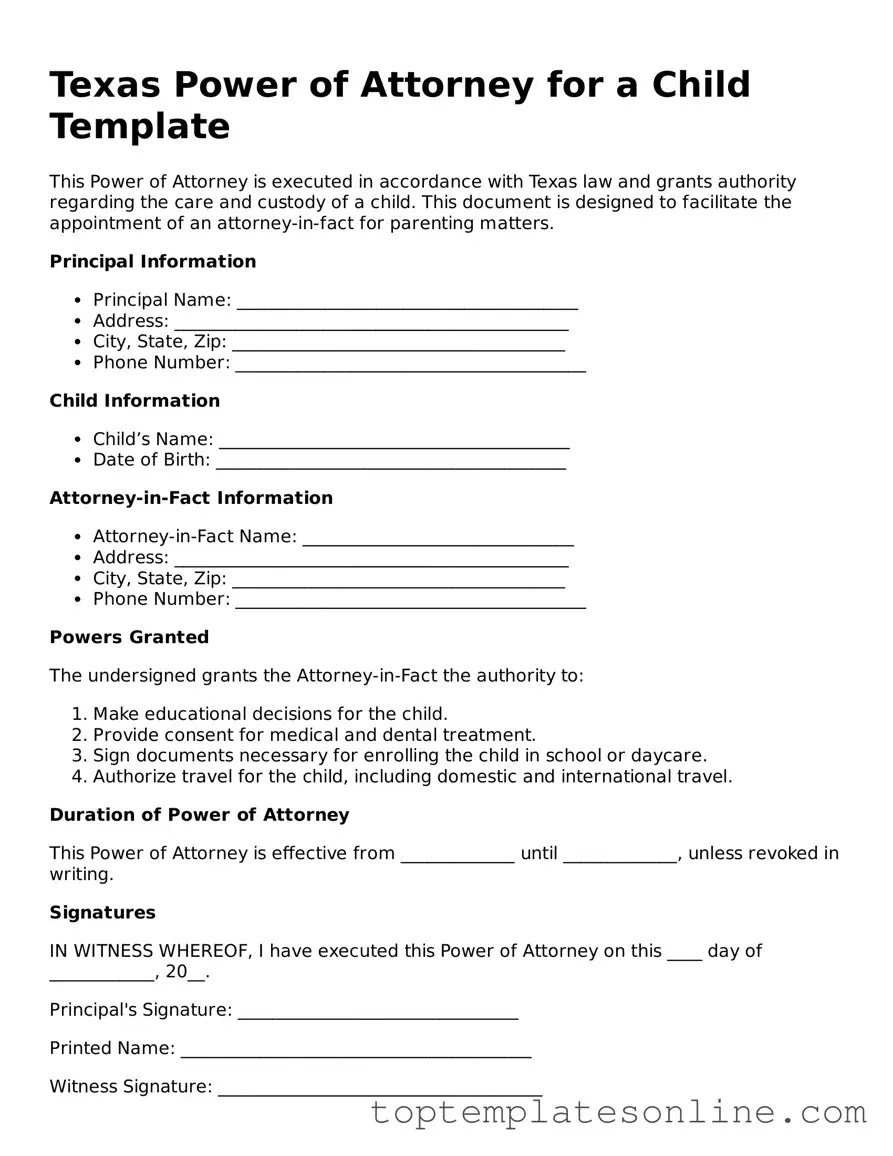When it comes to ensuring the well-being of a child in Texas, having the right legal tools at your disposal is crucial. One such tool is the Texas Power of Attorney for a Child form, a document that grants a trusted individual the authority to make decisions on behalf of a minor. This form is particularly useful in situations where a parent or legal guardian may be temporarily unavailable, whether due to travel, illness, or other circumstances. By designating a person to act on their behalf, parents can ensure that their child's needs—ranging from medical care to educational decisions—are met without unnecessary delays. The form outlines specific powers granted to the designated agent, which may include the ability to consent to medical treatment, enroll the child in school, and even make decisions regarding extracurricular activities. It’s important to note that the authority granted can be tailored to fit the unique needs of the family, allowing for flexibility in how decisions are made. Understanding the nuances of this form can empower parents to safeguard their child's interests, ensuring that care and support are always available, no matter the circumstances.
